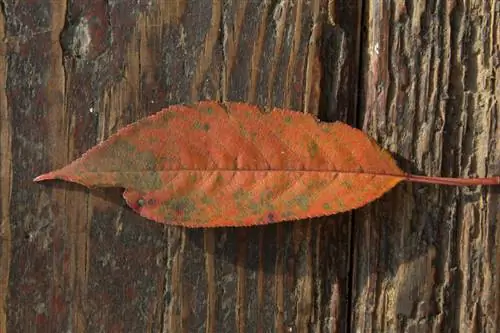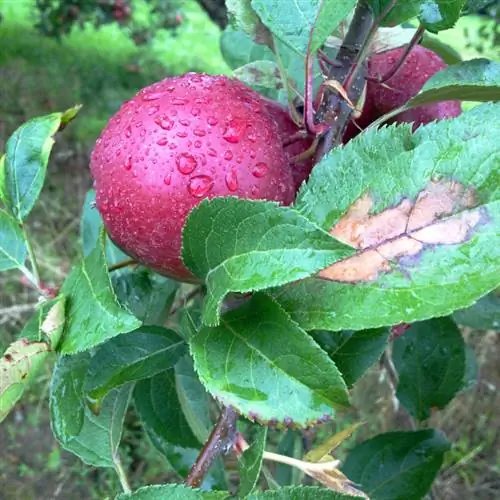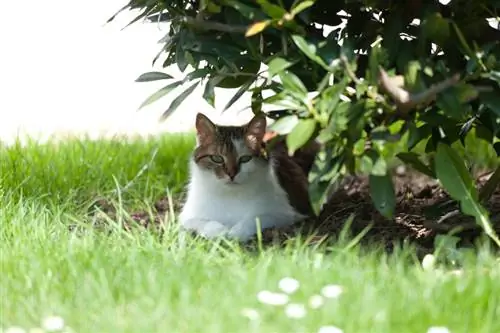- Author admin [email protected].
- Public 2023-12-16 16:46.
- Last modified 2025-01-23 11:19.
One of the characteristics of the he althy cherry tree is its lush green foliage. If individual leaves turn brown in spring or summer, an attentive gardener will rightly suspect that this unnatural color is due to a disease.

What causes brown leaves on the cherry tree?
Brown leaves on the cherry tree can indicate diseases such as Monilia tip drought, shotgun disease or Gnomonia leaf brown. To prevent the spread, infected leaves, flowers and twigs should be removed and, if necessary, chemical control measures should be taken.
Most diseases of cherry trees are fungal diseases. The infestation often affects not only the bark, flowers and fruits, but also the leaves. These change color, develop holes, dry out and fall off or remain attached to the tree, depending on which disease caused the leaf discoloration. Eligible:
- Monilia Lace Drought,
- Shotgun disease,
- Gnomonia leaf tan.
Monilia Lace Drought
This disease becomes noticeable when the flowers initially begin to wilt. As the infestation progresses, the shoot tips and leaves turn brown and dry out. The dried flowers, leaves and branches remain on the tree and must be removed and destroyed to avoid further infection. The pathogens that cause Monilia peak drought can otherwise overwinter in the infested areas and spread further in the following year.
Shotgun disease
The leaves affected by shotgun disease only look brown from a distance. When viewed up close, the leaves are covered with small spots that initially turn crimson red and then turn dark brown. Over time, the eponymous shotgun holes appear in the middle of the spots. The damaged leaves are shed from the end of June. The fungus overwinteres in the affected branches, so these must be cut back radically and, if necessary, additional spraying measures must be carried out before the next flowering.
Gnomonia Leaf Tan
Gnomonia leaf tan only affects sweet cherry trees. The first signs of this can be found in winter in the form of leaves remaining on the branches. The fungus overwinters there and infects the young leaves that emerge in spring. These initially appear in patches, which slowly turn brown towards the end of July. The affected leaves must be removed. In cases of severe infestation, chemical control measures using suitable agents are sometimes unavoidable.
Tips & Tricks
Before you start identifying the disease, you should make sure that the wrong location and unfavorable weather are not responsible for the premature browning of the leaves.






